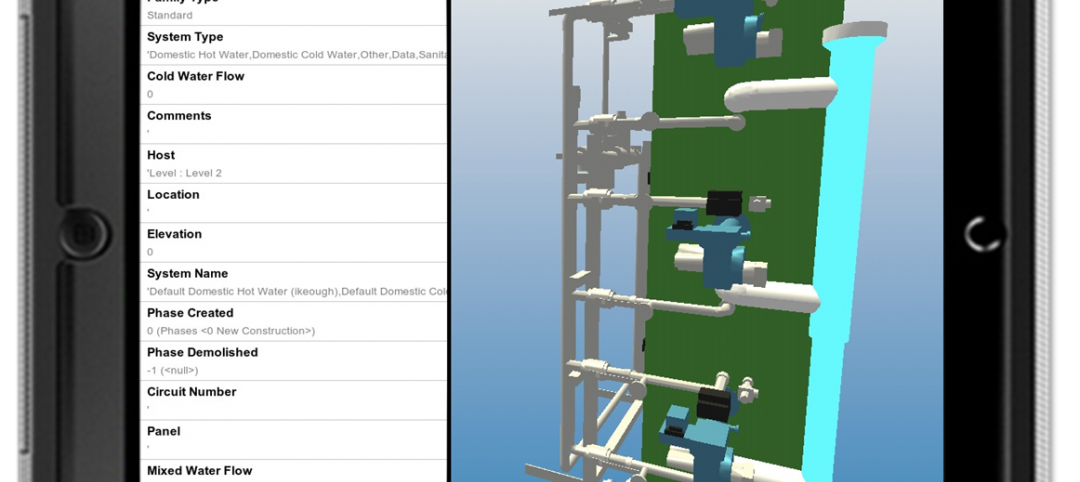Although the theme of the Fall BIM Forum held October 13-15 at the W Hotel in midtown Atlanta was “Evidence-Based BIM” almost all of the presenters repeated a call to use building information modeling and its supporting technologies to simply do more.
“BIM must be situated within a larger context of organizational performance,” said Debajyoti Pati, director of research for the HKS Clinical Solutions & Research group during his talk , “Evidence on BIM: High performance Hype Meets Reality.” Pati would be just one of many presenters challenging the audience of hundreds of BIM aficionados to unlock more of the potential of the now established design and construction technology.
Charles Eastman, Professor in the Colleges of Architecture and Computer Science at Georgia Institute of Technology and the leader of the school’s Design Computing Group noted that BIM users must define standard syntax and structure for BIM rule families and procedures while discussing his work with the GSA. He and his fellow presenters from Georgia Tech noted that two-thirds of the effort needed to model simple infrastructure is still spent on converting BIM models so that they are compatible with each other.
John Moebes, AIA, director of construction at Crate & Barrel said his company is finally seeing results from its switch to BIM in 2005. Today, Crate & Barrel is using BIM technology to require all their electrical systems and modular wiring are built in a factory offsite and shipped to store sites as components. They also require all structural engineers as steel fabricators to work as a team early in the design process to eliminate errors and insure fast delivery and erection. Design and construction of a new store used to take 86 weeks, now it’s down to 58 weeks. Still, Moebes lamented that AEC owners and Building Teams aren’t doing enough with the technology.
“There is no AEC owner industry,” he said. “An owner’s core business model is consumption of building uses. We need to look at revolution, not evolution. Do we see this technology as something that makes our business a little bit better every year, or a game changer?”
Moebes said developers and Building Teams need to get better at asset management, data visualization, supply chain logistics and use of the internet to truly unlock BIM technology’s innate power. He said the focus needs to change from refining BIM programs to how we can maximize profits by changing processes.
Moebes drew an analogy to the use of guns in warfare from 1400 to 1916. From 1400 to around 1850 the technology of the gun barely changed and no one could foresee the end of trench warfare. But by World War II a small group of people thought differently and realized that if tactics changed to embrace the 1916 invention of the tank, war could be fought much differently. Moebes then noted that orthographic drawings have not changed much since the time of the invention of the gun.
“Attrition is being used for buildings now,” he said. “But, just like the tank, we have BIM.”
Birgitta Foster, Partnership Development Lead at Sandia National Laboratories, took Moebes criticisms a step further in her presentation “Design for Maintenance” and bluntly asked “why are we moving so damn slow?”
Foster noted that a 2004 National Institute of Standards and Technology study showed that $15 billion a year was wasted on inefficiently designed building operations systems that required too much hard-to-perform maintenance.
“We, as architects and engineers, need an operations and maintenance strategy,” Foster said. “Chillers, pumps and other building systems need to maintenance friendly and have room for people to service them. The costs of poorly designed operations are two to four times as much in maintenance time.”
Foster used the example steam traps to make her point. There are 4,800 steam traps at the Sandia National Laboratory. Easy access traps take 20 minutes to service according to the facilities and maintenance staff there. Difficult access steam traps take 45 minutes to service.
Foster concluded that BIM can standardize operations and maintenance. 63% of the facilities and maintenance staff members she surveyed said they would use it all the time or often based on what they were shown.
“We have so much we can do with BIM that we don’t even know it yet because our processes are holding us back,” she said. BD+C








